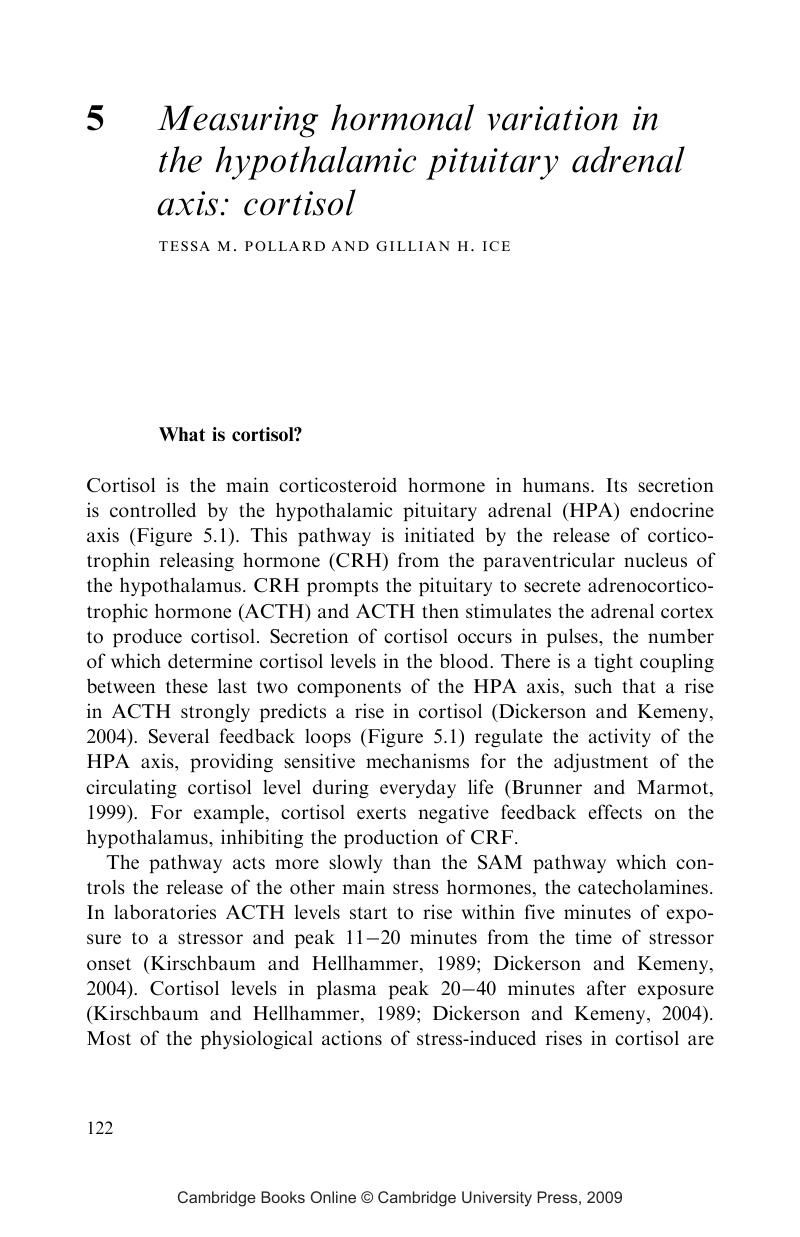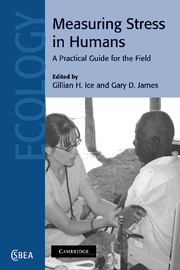Book contents
- Frontmatter
- Contents
- Contributors
- Foreword by Geoffrey A. Harrison
- Part I General principles
- Part II Measuring stress responses
- 2 Cultural dimensions of the stress process: measurement issues in fieldwork
- 3 Measuring emotional and behavioral response
- 4 Measuring hormonal variation in the sympathetic nervous system: catecholamines
- 5 Measuring hormonal variation in the hypothalamic pituitary adrenal (HPA) axis: cortisol
- 6 Measuring physiological changes in the cardiovascular system: ambulatory blood pressure
- 7 Measuring immune function: markers of cell-mediated immunity and inflammation in dried blood spots
- Part III Practical issues in studying stress
- Index
- References
5 - Measuring hormonal variation in the hypothalamic pituitary adrenal (HPA) axis: cortisol
Published online by Cambridge University Press: 11 September 2009
- Frontmatter
- Contents
- Contributors
- Foreword by Geoffrey A. Harrison
- Part I General principles
- Part II Measuring stress responses
- 2 Cultural dimensions of the stress process: measurement issues in fieldwork
- 3 Measuring emotional and behavioral response
- 4 Measuring hormonal variation in the sympathetic nervous system: catecholamines
- 5 Measuring hormonal variation in the hypothalamic pituitary adrenal (HPA) axis: cortisol
- 6 Measuring physiological changes in the cardiovascular system: ambulatory blood pressure
- 7 Measuring immune function: markers of cell-mediated immunity and inflammation in dried blood spots
- Part III Practical issues in studying stress
- Index
- References
Summary

- Type
- Chapter
- Information
- Measuring Stress in HumansA Practical Guide for the Field, pp. 122 - 157Publisher: Cambridge University PressPrint publication year: 2006



